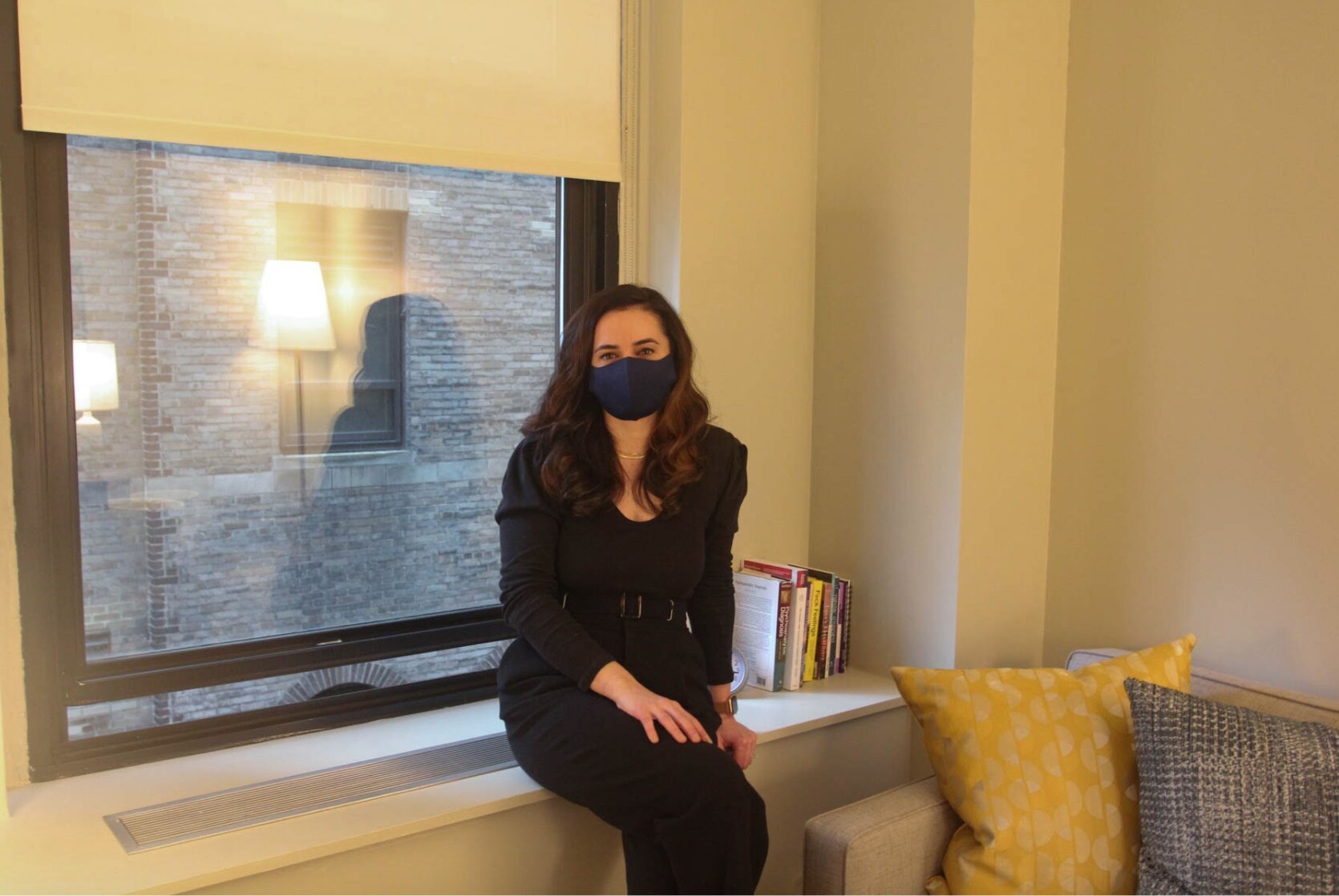Isolation, grief and too much screen time have led to increased requests for treatment. Call volume to one national hotline has gone up 400 percent.
Yasmeen Alhaj first remembers thinking that something was wrong with her because of her body size when she was 5 years old. By age 9, family members were encouraging her to lose weight, stating that they were worried about her health and that being fat would make her life harder. She also faced social pressure, being bullied by classmates for her size. To avoid being shamed for eating, Alhaj began binging.
“This was all due to constantly being encouraged to diet and pursue weight loss,” Alhaj said.
Now 26 years old and pursuing a master’s degree in clinical nutrition at New York University, Alhaj struggled with anorexia and bulimia throughout her childhood and teenage years and was diagnosed with an eating disorder at age 24. She is one of the 28.8 million people in the United States, 9 percent of the population, who suffers from an eating disorder at some point in their life. The most common eating disorders — anorexia nervosa, bulimia and binge-eating — are among the deadliest mental illnesses, second only to opioid overdose, with 10,200 deaths related to eating disorders occurring nationwide every year.
With the pandemic, eating disorders and demand for treatment have increased around the country. Call volume to the hotline of the National Association of Anorexia Nervosa and Associated Disorders rose by 400 percent and has remained steady since, said Lynn Slawsky, executive director. She attributed the rise of call volume to the increase in stressors that individuals are experiencing — from forced isolation, to concerns around social distancing, to general uncertainty about their lives.
Danielle Small, regional director Northeast of Monte Nido & Affiliates, which runs eating disorder treatment centers around the country, has seen a similar rise. To meet demand, Monte Nido has expanded its programs beyond the New York City metropolitan area to upstate New York. “Many individuals are simultaneously struggling financially, managing social isolation, and dealing with grief and loss,” said Small. “The eating disorder is a maladaptive coping mechanism that can be very effective in shutting down the difficult feelings associated with these struggles.”
During the pandemic, increased screen time has meant more exposure to various forms of media like advertisements, television and social media, which often emphasize body image issues and can lead to an increase in eating disorders. A 2019 study published in the International Journal of Environmental Research and Public Health found a connection between time spent consuming media, negative body image and disordered eating.
Similarly, jokes around the “Quarantine 15” have also had devastating effects on people with distorted eating habits as it has added an extra layer of pressure on them to monitor their weight, said Bryn Austin, founding director of the Strategic Training Initiative for the Prevention of Eating Disorders and lead researcher of a study that assessed the economic impact of eating disorders.
“It’s just giving people another thing to be afraid of,” Austin said. “It’s playing on people’s fears and weight stigma, rather than being anything that’s constructive for folks who were already vulnerable to being very concerned about their weight or already had dysregulated eating.”
Fear of food scarcity at the beginning of the pandemic, when local and state governments called for people to stock up on essentials like dried, canned, and frozen foods, was another challenge even for people who hadn’t struggled with eating disorders.
“For a lot of people who have struggled with eating, they feel kind of trapped in their homes and in the situation they’re in,” Jaclyn Lopez Witmer, a psychologist with the Therapy Group of NYC said. “When it comes to binge eating, it’s such a huge emotional component of comfort. They feel that their lives are uncertain… and people mindlessly do a lot of things, like eating.”

New living situations created another pressure point. A Pew Research Center survey of 12,600 individuals living in the United States published in February 2021 found that 5 percent of Americans moved during the pandemic, with 17 percent of people moving to be closer to family. Aspeople had to move back in with their families, many faced judgement about their bodies and eating habits.
“A lot of people were all of a sudden living in different situations this year,” Witmer said. “And maybe they had a routine or structure to help them with their eating disorder recovery. And all of a sudden that was thrown out the window.”
Video conferencing has also had a major impact on the rise of eating disorders.
“Eating disorders are often maintained or exacerbated by concerns regarding appearance,” said Rachel Rodgers, associate professor in the Department of Applied Psychology at Northeastern University and one of the lead researchers of a study published in the peer-reviewed International Journal of Eating Disorders. “For people for whom appearance is a concern, having their image reflected back to them and being aware constantly of what they look like and the fact that other people are looking at them could heighten those concerns.”
A rise in rates of eating disorders was not particularly shocking given the increase in other mental health issues, including anxiety and depression during the pandemic. Getting adequate treatment, however, has been an issue.
Even before demand for treatment rose with the pandemic, the health care system could not adequately accommodate all individuals suffering from eating disorders, said Austin of the Strategic Training Initiative for the Prevention of Eating Disorders. In a 2019 research paper, she calculated that in 2017 the National Institutes of Health funded research for Alzheimer’s disease at approximately $239 per affected individual, autism at $109, and schizophrenia at $69, whereas, for eating disorders research, the National Institutes of Health only awarded approximately $1 per affected individual.
“Eating disorders research and clinical training are vastly underfunded in the U.S.,” Austin said. “U.S. federal research funding for eating disorders amounts to a small fraction of funding allotted to other serious illnesses, especially when taking into account the illness burden on individuals, their families, and society.”
Therapy sessions by phone or Zoom have also affected the treatment of eating disorders.Without being able to see her clients in person, Witmer said she hasn’t been able to monitor as easily whether her clients are losing weight, gaining weight or looking unhealthy.
“When I’m seeing someone in person, every week or every other week, I have eyes on them,” Witmer said. “I’m only seeing two dimensions of a person so I’ve been more direct in asking about certain things that maybe I wouldn’t have as much before.”
While teletherapy has advantages, the technology also creates barriers for clients. For those living in close quarters with others who they may not want overhearing their conversations, teletherapy may not be comfortable or even possible.
Witmer predicted that because of how difficult the year has been, it’s likely that eating disorder cases will continue to increase long after this pandemic is over. Thus, she said, it’s important for people to avoid encountering triggering content and better manage body image issues and distorted eating habits.
“I tell a lot of clients, let’s really think about who you’re following on your feed and what is triggering you the most,” Witmer said. “Usually, it’s a host of celebrities and other influencers. . . . I try to work a lot from a place of how we can be more mindful about all these different things that we’re doing throughout our day.”
If you or anyone you know is struggling with an eating disorder, please call the National Eating Disorders Association’s Helpline at (800) 931-2237 on Monday to Thursday from 11 a.m. to 9 p.m. and Friday from 11 a.m. to 5 p.m. For crisis situations, text “NEDA” to 741741 to be connected with a trained volunteer at Crisis Text Line.
Originally published September 9, 2021 at https://columbianewsservice.com/2021/09/09/eating-disorders-have-shot-up-during-the-pandemic
Columbia News Service publishes the work of enrolled students at the Columbia University Graduate School of Journalism in New York City. For more of our stories, please visit www.columbianewsservice.com.




